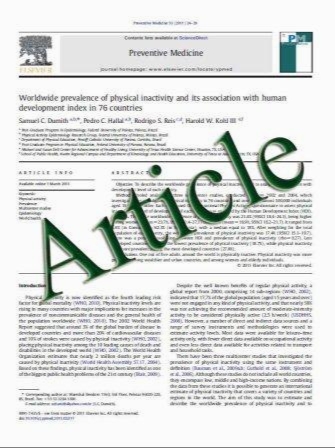Primary lymphoma of the cranial vault: case report and a systematic review of the literature
- نوع فایل : کتاب
- زبان : انگلیسی
- مؤلف : Abad Cherif El Asri & Ali Akhaddar & Hassan Baallal & Omar Boulahroud & Cherkaoui Mandour & Hafsa Chahdi & Mohammed Mikdame & Miloudi Gazzaz & Brahi
- چاپ و سال / کشور: 2011
Description
Background Bone involvement is a common finding in many types of lymphoma. Cranial vault involvement is extremely rare, and the majority of patients are found at staging to have concurrent disease in lymph nodes. Thirtyeight cases of primary lymphoma of the cranial vault have been reported to date. Methods This article presents a rare case of primary cranial vault lymphoma and conducts a systematic review of the current literature. A total of 36 articles comprising 38 cases were included for analysis. The relevant demographic, clinical, and imaging characteristics, as well as the treatment and outcomes of this unique disease presentation were studied. Results The average patient age was 60 years. There was no significant difference in patient gender. The predominant patient complaint was a subcutaneous scalp mass. Of the patients, 11.7% were immunocompromised. CTscans showed signs of osteolysis in 74% of lesions and hyperostosis in 5%, and the cranial vault was observed as normal in 18% of cases. MRI was performed in 23 cases. There was a wide range of histological subtypes, with a slight predominance of diffuse large B-cell lymphoma. Treatment consisted of surgery alone, surgery followed by radiotherapy, and surgery followed by radiotherapy and chemotherapy. The follow-up periods ranged from 5 months to 6 years, with a median value of 7 months. Sixteen patients were followed up to 12 months; 13 of them were alive at 1 year from diagnosis. Conclusion Primary cranial vault lymphoma is an extremely rare finding. It should be considered in the differential diagnosis of scalp masses. Although the analysis of outcome of the reported cases is difficult because of the small number of occurrences of this entity and the variability of follow-up, a combination of surgery, radiotherapy, and chemotherapy seems to offer better outcomes.
Acta Neurochir DOI 10.1007/s00701-011-1124- 0Received: 25 April 2011 / Accepted: 29 July 2011


